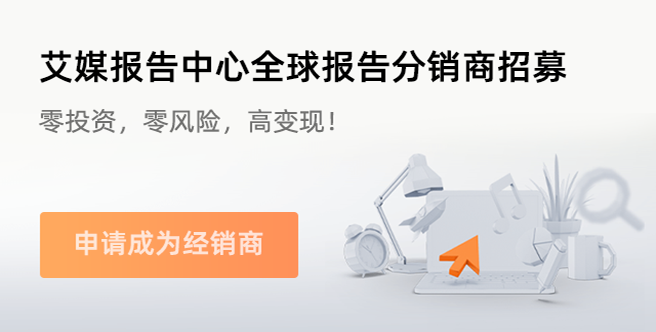关于“蕉内”的报告
艾媒咨询|2020中国移动应用市场生态洞察报告
本报告研究涉及企业/品牌/案例:移动认证,华为应用市场,App Store,应用宝。
随着通信技术水平的迅速发展及电信业务的普及,中国移动应用产业链逐渐完善,行业发展速度加快。产业上游方面,2020年截至7月,中国在架移动应用达到357万款,厂商更加注重对用户便捷、安全体验的满足。中游方面,移动应用分发渠道发展产生了重要变化。iiMedia Research(艾媒咨询)数据显示,2020年中国小程序用户规模预计达到8.3亿人,新兴渠道对传统应用商店分发模式形成冲击。另一方面,在中美关系紧张的情况下,华为推进的HMS生态系统建设有望对标iOS及安卓,未来该系统有机会成为开发厂商竞争新赛道。下游方面,移动应用在应用场景方面也往更加垂直化的方向发展,如电商、文娱等领域催生出更加细分的场景,也从更多维度满足用户需求,在总体移动应用用户规模增速放缓的情况下,挖掘新的发展机会。
With the rapid development of communication technology and the popularization of telecom business, China Mobile APP industry chain is gradually improved, and the growth of market is accelerated. As for the upstream, by July 2020, the amount of in-store APP in China has reached 3.57 million, and the enterprises are paying more attention to the satisfaction of user convenience as well as security experience. In the midstream, the development of APP distribution channels has undergone important changes. As the data of iiMedia Research showed, user scale of mini-program in China is expected to 830 million in 2020. And the emerging channels will have an impact on the distribution mode of traditional APP stores. On the other hand, under the tense relationship between China and United States, Huawei’s HMS ecosystem construction is expected to be benchmarked with iOS and GMS. In the future, the system has the opportunity to become a new race track for developers to compete. On the downstream side, the industry is developing in a more vertical direction in terms of application scenarios. Fields like e-commerce, entertainment, etc. give birth to more subdivided scenarios, and meet users’ needs from more dimensions. In the case of slowing down of the overall growth rate of APP users, new development opportunities are explored.艾媒咨询|2020上半年全球商贸数据监测及中国外贸企业内循环经济机遇研究报告
本报告研究涉及企业/品牌/案例:广东凯迪服饰有限公司、深圳市佰维存储科技股份有限公司。
全球疫情蔓延、贸易保护主义等因素导致全球经济面临下滑风险,跨境贸易和投资活动急剧萎缩,中国外贸企业环境恶化。2020年上半年,中国出口10987.5亿美元,同比下降6.2%,其中服装、机械设备出口降幅跌破16%,成为重创程度较大的行业。于是,各省份纷纷出台关于出口转内销的内循环经济的针对性政策措施,从政策层面助力外贸企业渡过危机。但是,当前出口企业发展内销模式仍存在生产线转向难、销售渠道不畅、国内外市场需求痛点不同和缺乏品牌化优势等问题,外贸企业必须进行相应的调整。
The spread of global epidemic and trade protectionism have caused the global economy to face the risk of decline, the cross-border trade and investment activities have shrunk sharply, and the environment of Chinese foreign trade enterprises has deteriorated. In the first half of 2020, China's exports reached US$ 1,098.75 billion, down 6.2% year-on-year, among which the export of clothing and machinery and equipment fell below 16%, making it a severely damaged industry. As a result, various provinces have issued targeted policies and measures on the internal circular economy from export to domestic sales, helping foreign trade enterprises to tide over the crisis from the policy level. However, there are still some problems in the domestic sales model of export enterprises, such as difficult production line turning, unsmooth sales channels, different pain points in domestic and foreign markets, and lack of brand advantages. Foreign trade enterprises must make corresponding adjustments.艾媒报告|2019-2022中国医疗器械市场大数据及标杆企业运行监测报告
本报告研究涉及企业/品牌/案例:安健科技,万东医疗,康达国际,上海联影,深圳迈瑞佳能,飞利浦,柯达,西门子,GE,安健,万东,通用电气,安科,东软丹纳赫,罗氏,利德曼,强生,科华,美康,九强,日立,迈克,东芝,中生,雅培,迪瑞,大基康明,金杏,致远,成武,长庚,康健,鑫乐,瑞琦,力因精准,积水,威高,拱东,三力,阳普医疗,BD,奥凯龙,重庆多泰,成都威力生,广州暨华,威海威高,山外山,金宝,尼普洛,百特,贝朗,费森透析,美敦力,鱼疗,理邦,尚荣医疗,英科医疗
相比于全球医疗器械市场,近三年中国医疗器械市场的结构已趋向优化但结构依然严重不平衡。早期中国医疗器械市场中,中低端产品占据了将近70%的比例,而高端产品仅占30%左右的比例,而国际医疗器械市场的结构为高端产品占55%,低端产品占45%。如新华医疗、迪安诊断、乐普医疗、鱼跃医疗等积极开拓高端市场及寻求出海发展。艾媒咨询分析师认为,受人工智能、物联网、5G等技术的影响,高端化、智能化和家庭化是中国医疗器械产业发展最为显著的三大趋势。特别是医疗大数据、高端医疗影像设备、家用医疗器械、智能便携式医疗设备等领域将会备受关注。
Compared with the global medical device market, the structure of China's medical device market has been optimized in the past three years, but the structure is still seriously unbalanced. In the early Chinese medical device market, low-end products accounted for nearly 70% of the proportion, while high-end products accounted for only about 30%, while the international medical device market accounted for 55% of high-end products and 45% of low-end products. Such as Xinhua Medical, Dean Diagnostics, Lepu Medical, Yuyue Medical, etc. actively explore the high-end market and seek to develop. iiMedia Research analysts believe that high-end, intelligent and family-oriented are the three most significant trends in the development of China's medical device industry due to the impact of artificial intelligence, Internet of Things, 5G and other technologies. In particular, medical big data, high-end medical imaging equipment, home medical equipment, smart portable medical equipment and other fields will be of great concern.艾媒报告 |2019中国职业发展教育现状与细分领域研究报告
本报告研究涉及企业/品牌/案例:广州城建职业学院,广东岭南职业技术学院,重庆能源职业学院,四川国际标榜职业学院,北京商鲲,华晟经世,新迈尔,中公教育,文都教育,金英杰,学尔森,瑞达法考,厚大法考,高顿教育,达内教育,新东方,中国东方教育,和君商学院,聚成股份,尚睿通,中国新华教育,21世纪教育,希望教育,Udacity
2019年,政府工作报告提出,高职院校要大规模扩招100.0万人,鼓励更多应届高中毕业生和退役军人、下岗职工、农民工等报考。2018年,中国技能劳动者约1.7亿人,但其中高技能人才只有0.5亿人。利好政策、“蓝领”供需矛盾突出,推动学历职业教育发展。而在非学历职业教育中,iiMedia Research(艾媒咨询)数据显示,2018年中国职业技能教育市场规模达1103.0亿元,预计将会持续保持增长。到2021年,将增长至1919.0亿元。2018年,职业技能培训市场投融资事件共71起,其中IT类和金融财会类占比最多,均占比15.5%。2019年上半年,新东方在线与中国东方教育在港交所上市。在超千亿投融资市场中,各职业教育开始崛起,如成人教育、企业培训、考研等。
In 2019,Report on the Work of the Government put forward that the higher vocational colleges would expand the enrollment about 1 million students and encourage more high school graduates, former military personnel,laid-off workers,farmers to register. There were approximately 17.0 billion skilled workers in 2018, however, the amount of talents with skills was just around 5 billion.Property policies, as well as the imbalance of demand and supply of blue-collar workers, drives the vocational education to develop. In terms of non-academic vocational education, iiMedia Research shows that the market scale of vocational skill education in China were 1.1 trillion yuan in 2018. It predicts that the scale will keep rising to 1.9 trillion yuan in 2021. There were 71 events of investment about vocational skills in 2018, and the type of IT and finance accounted for the most, both with the percentage of 15.5%. In the first half of 2019, Koolearn and China East Education went public in Hongkong Stock Exchange. In the investment market over 10.0 trillion yuan, all sorts of vocational education began to rise, such as adult education, enterprise training,the entrance examination of graduate schools and so on.


















